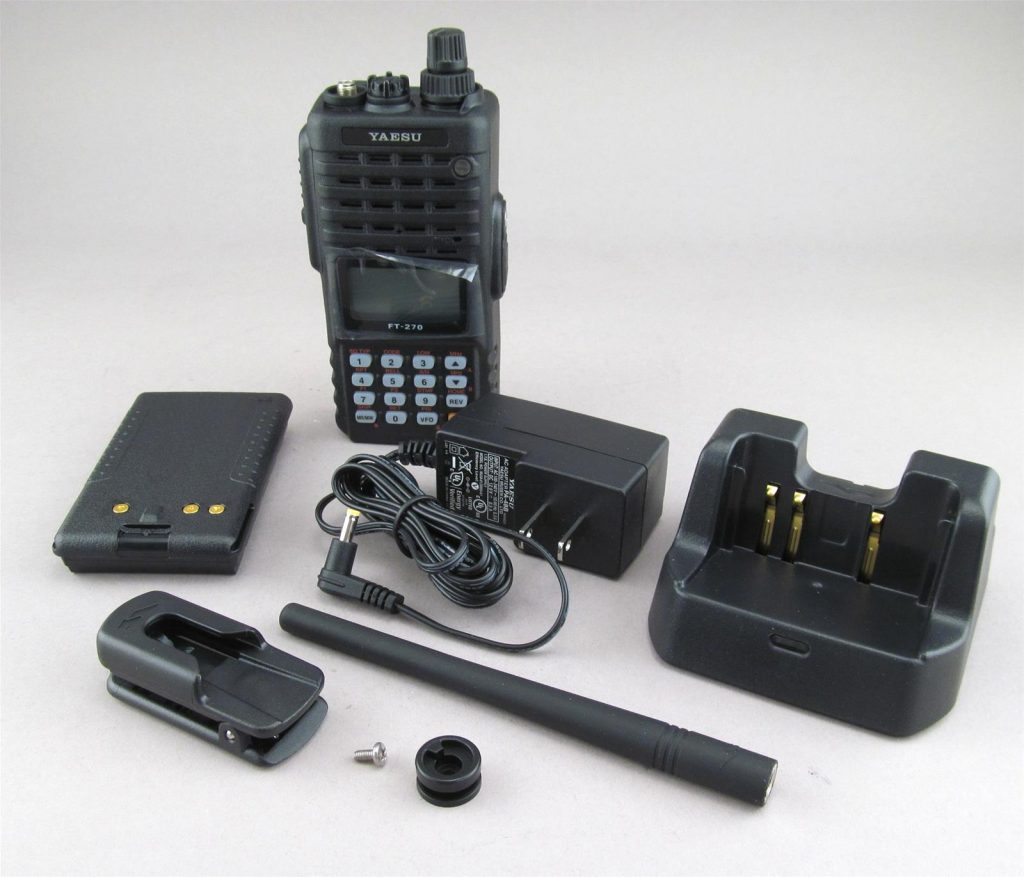
Often, the first radio a new Ham buys is a handheld transceiver (HT). They’re relatively inexpensive and very flexible because handhelds can be used at home, in the car, and in the field. Mostly, they’re used for chatting with nearby Hams, communications for local special events, and emergencies.
So, what makes a good first handheld radio? It depends a lot on two things–how you plan to use the radio and your budget.
Single Band, Dual Band, More?
How many bands do you really need? Local communications often take place on 2 meters, the VHF band with the most Ham activity nationwide. Generally, you can’t go wrong getting a 2 meter handheld. Dual band HTs (2M/70cm) have become popular in the last few years and many don’t cost much more than a single band unit. Also, there are more expensive multiband units that add 1.25 meters and 6 meters to the mix.
The best strategy is to find out which frequencies are mainly used in your local area and buy a radio that covers them. Check the ARRL Repeater Directory, the online Repeater Book or consult a local Ham. If you’re interested in emergency communications, check with your local ARES or RACES groups to find out what local repeaters and simplex frequencies are used.
Features
Most handhelds have more features and menu functions than most of us will ever use. Here are some ones you should look for:
Is it rechargeable? There’s nothing worse than having to scrounge for batteries. Lithium-ion batteries are the preferred choice for rechargeable packs.
Does the HT have a large memory bank to store your favorite frequencies? It’s convenient to have your favorite frequencies in memory so you can access them with the touch of a button or twist of a knob. You can fill 100 memory channels very quickly.
Does it include a programming cable and software, or is one available from the dealer? Programming memory frequencies can be done from the HT keypad, but it’s usually a pain. Using your computer is way easier—if you can type, you can program.
Is there an external mic/headset/push-to-talk connection? If you operate portable or mobile, this feature is very handy. Grabbing a microphone is a lot easier than picking up the whole radio. Headsets and earphones can help with privacy and are indispensible in noisy areas.
Will it receive other bands, such as aircraft, FM broadcast and weather? You can listen to NWS weather reports or your favorite FM stations.
What kind of antenna connection does it have? Is it SMA or BNC? Handhelds come with antennas of varying quality and sizes, and you may want to upgrade to get better range. Also, you may decide to get a vehicle antenna for mobile operation. SMA is currently the most commonly used, but BNC is quicker to disconnect.
Does it have a channel selector knob/button and a keypad? These features will help you quickly change frequency and access some of the more commonly used functions such as power level, frequency scanning, and programming frequencies manually.
How much power do I need? Most handheld radios have a maximum power of 5 watts—some have as much as 8 watts. Be sure you choose one that has at least a high and low setting. Lower power settings can save batteries, especially when communicating with a repeater or over short distance.
Getting on the Air
Handhelds are pretty simple to operate—buy it, turn it on and use it. Just about all of them come with the basics: flexible (rubber duck) antenna, charger, rechargeable battery, and belt clip. Depending on your needs, there are several accessories you may want to consider, including spare battery packs, speaker/microphones, and programming kits.
DX Engineering has several brands of handhelds, as well as complete Getting Started HT Radio Packages that include everything you’ll need to get you on the air and improve your signal. If you’re thinking about going mobile, consider an antenna for your vehicle. A magnetic mount antenna will help give your handheld additional range.

